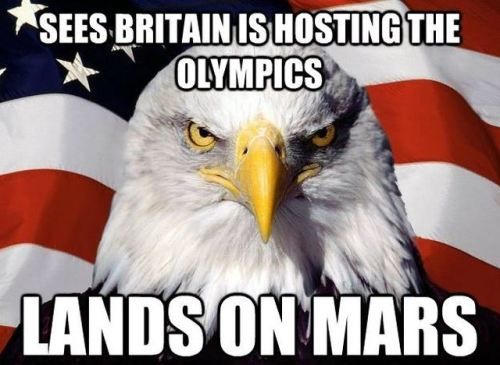
By Sara Lasseter
On August 5, 2012, NASA successfully landed its robotic rover Curiosity on our dusty red neighbor in space. It only took 40 attempts, years of research and billions of dollars in government funding, but we finally made it!
In today’s plugged-in society where we are constantly connected, it was easier than ever to be a part of the anticipation and ecstasy of the NASA employees that worked on the landing of Curiosity. Streaming watch parties were held across the world for fellow space nerds to congregate and view the most epic touchdown ever broadcast. Whether from the privacy of their cherished Star Trek-themed bedroom or among other astronomically aware cronies, people were tweeting, posting and meme-making from the moment Curiosity set its wheels down in Mars’ Gale Crater.
The creation of the @MarsCuriosity Twitter handle in 2008 was the beginning of a highly social effort on behalf of NASA to get the average citizen more involved in its $2.5 billion project to land on Mars. While many people took the mission’s success seriously, social media sites exploded with Mars Rover humor and Curiosity comics. Articles everywhere highlighted the cleverest Mars Curiosity tweets and internet fanatics began cranking out memes on things like the London Olympics vs. NASA’s Curiosity landing.
Watchers felt almost personally connected to the room full of yelling, laughing, hugging NASA workers whose reactions were broadcast over the internet and on news stations everywhere. Bobak Ferdowsi, Mars Curiosity flight director, led the successful landing and became an internet meme sensation across the nation, gaining a massive Twitter following as well as a few marriage proposals.
After the United States government cancelled NASA’s Moon Program in 2010, the organization began to focus efforts and funding on a highly desired Mars landing that would spark interest and support it may have lost in the structural changes it had endured.
This historic moment in United States space exploration is the first of many socially tracked events in the future. As technology in space travel and other industries becomes more advanced, so does the world of social media and content sharing. These capabilities will allow for increased access to the activities of government groups as well as garner support for NASA and other organizations. Both sides benefit from a more socially connected world and we can only imagine the next intergalactic victory we’ll be tweeting about in the future!
